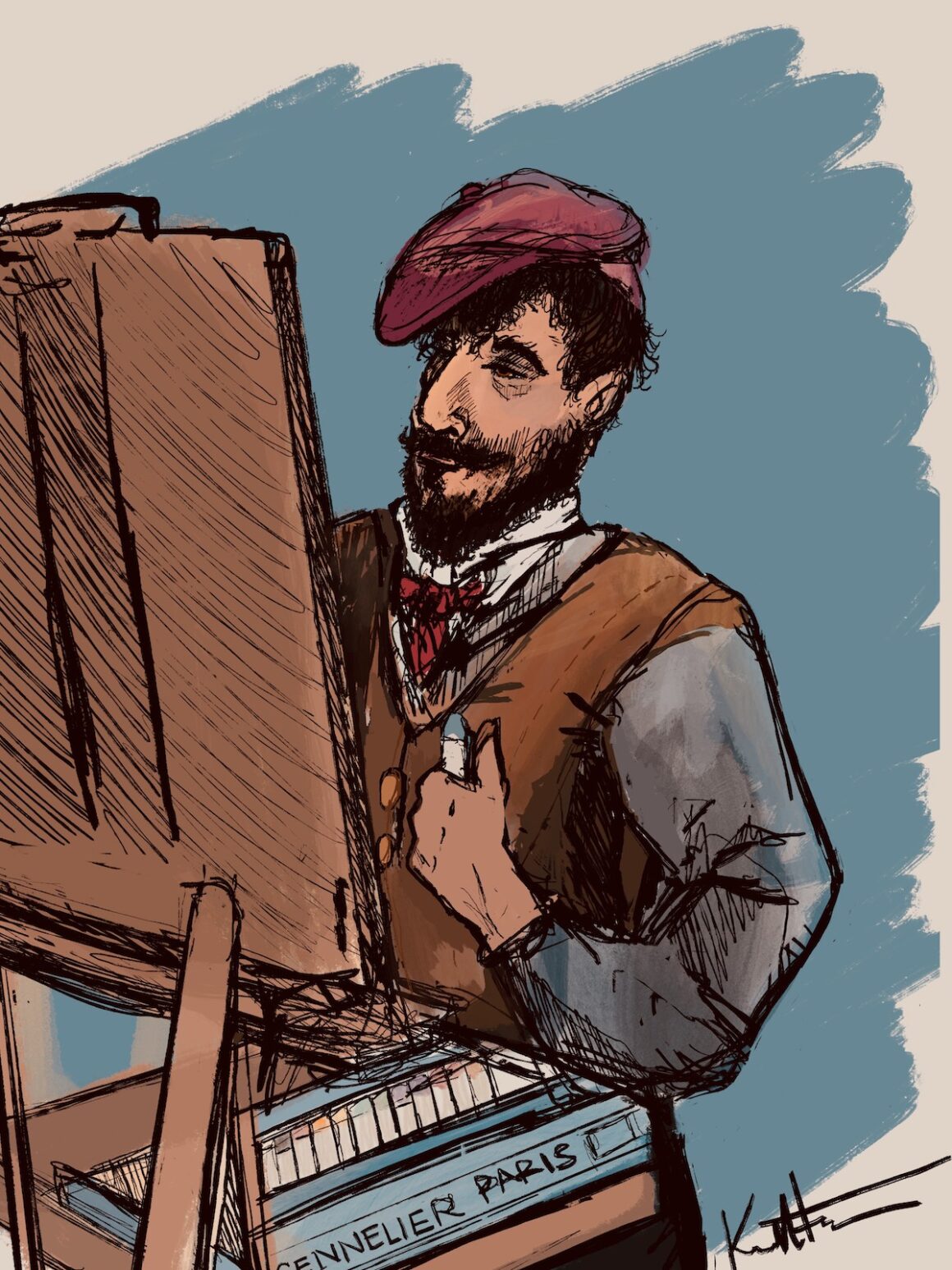The Global Art Treasure Hunt for Christos Simatos

 The big surprise — and what makes this story so different — is that during one special span of his career Simatos was also an itinerant painter aboard a trans-Caribbean luxury cruise ship. As Reiter continued to find more portraits, he realized he was forming a time capsule of celebrities, royalty, and the haute bourgeoisie of an era spanning from the 1920s to the late 1970s. Simatos met many of his sitters while on the Promenade Deck of the S.S. Homeric. The ship belonged to the Home Lines company, based in Genoa, Italy. This was during an era when the cruising industry was far different than it is today. Ship logs reveal that Simatos pursued this engagement as artist-in-residence from about 1955–1967, most years making several mid-winter excursions. In short, Simatos was the first artist to capture a unique slice of the characters who populated mid 20th century culture.
The big surprise — and what makes this story so different — is that during one special span of his career Simatos was also an itinerant painter aboard a trans-Caribbean luxury cruise ship. As Reiter continued to find more portraits, he realized he was forming a time capsule of celebrities, royalty, and the haute bourgeoisie of an era spanning from the 1920s to the late 1970s. Simatos met many of his sitters while on the Promenade Deck of the S.S. Homeric. The ship belonged to the Home Lines company, based in Genoa, Italy. This was during an era when the cruising industry was far different than it is today. Ship logs reveal that Simatos pursued this engagement as artist-in-residence from about 1955–1967, most years making several mid-winter excursions. In short, Simatos was the first artist to capture a unique slice of the characters who populated mid 20th century culture.
This unique discovery begins in 1965 when Reiter’s parents — Toby and Harry — an upper middle-class couple from suburban Long Island, were aboard the Homeric. It’s important to point out that the business of mid-20th century luxury cruising exuded an aura quite different from today’s cruise industry with its enormous floating hotels — mega-ships numbering in the hundreds and carrying millions of passengers around the globe. Today, no one with Simatos’ role would be found on board except, perhaps, a photographer. It was at the turn of the 19th century — Mark Twain’s “Gilded Age” — when luxury cruising reached its pinnacle with seven improved luxury ocean liners. Twain even lived to read about the ill-fated Titanic and the Lusitania. But in 1965, when Toby and Harry boarded the Homeric, luxury liners were just recovering from having been virtually snuffed out by two world wars. A striking example of this occurred in 1942, when the United States, attempting to support its war effort, commandeered the French super-luxury liner, the S.S. Normandie, while it was docked in New York Harbor. During its conversion to a troop ship, this Art Deco masterpiece caught fire and sank. The ship was raised, but the damage proved so extensive that it was scrapped. Later, some of the luxury cruise lines managed to thrive by promoting their voyages as vacation-adventures in opulence and pampering. As artist-in-residence, Simatos promised that a passenger’s experience would always be remembered with a unique keepsake.
Simatos was born in Greece. To date, his earliest commissioned portrait (ca.1923) places the young artist 1,500 miles northwest, in Monte Carlo. Many more commissions would follow, and his success allowed him to maintain residences in both Cannes and Paris. It was likely in one of those cities where he became best friends with Salvador Dalí and painted his portrait as well. Reiter’s collection includes portraits of many actresses, with the location identified as “Cannes.” These are dated just after World War II when the city’s film festival was building momentum. By the early 1950s, momentum had made the Cannes Film Festival an even greater international event. Simatos welcomed its booming stature, especially since it created an increasingly larger pool of prospective commissions from many well-known actors, actresses, and auteurs.
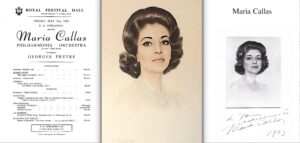
After Simatos passed in 1979, the dissipation of his legacy was assured — hidden away in the homes of his numerous patrons. Considering the course of a fifty-year career, it’s reasonable to assume that his life’s work exceeded a thousand original portraits — yet most of them remain undiscovered. Reassembling enough of these portraits to make sense of his accomplishments would seem a daunting and nearly an impossible task. Plus, despite his notoriety, Simatos never documented his work. Owing to the nature of portrait commissions, it’s unsurprising that exhibitions of his works have never been identified. Plus, it appears that he never gave any interviews to the press — all but ensuring that the story of his life and career would be lost to the ages.
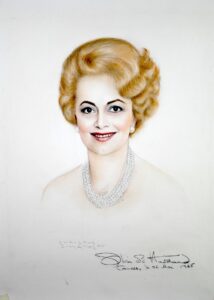

After Simatos retired from his engagement as artist-in-residence on the Homeric, there is no record of any other portraitist picking up where he left off. His legacy, now being restored by Reiter, offers intriguing insights. The dearth of biographical information about the artist is mitigated by the story behind each portrait. This research begins with identifying the sitters. One piece of the puzzle is provided when faces are recognizable. Simatos helped with this identification by occasionally writing the sitter’s name on the verso. Reiter estimates that of all the portraits he has come across, only about half of them include a date and/or a location. Paris and Cannes appear most often. Many other locations were noted, including Monte Carlo, Monaco, the Ritz-Barcelona, Cap d’Antibes, Sanremo, the Madeira Islands, Portugal, Nice, Patiala City, India, Beaulieu, England; and of course, the Homeric. Reiter remains in pursuit of all lost Simatos portraits. As more are revealed, a fuller picture of the life and work of this mysterious artist will emerge. Determined to memorialize Simatos’ legacy, Reiter has written an essay — “My Mother’s Portrait” — telling the ongoing story of his serendipitous discovery of the artist behind these portraits — a story that never ceases to inspire, motivate, and entertain him.
The Maharaja of Patiala
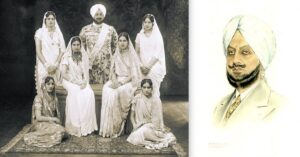

One patron of special note was Sir Bhupinder Singh, Maharaja of Patiala, India [1891-1938]. Reiter discovered that the Maharaja, instead of being referred to by the traditional title, “His Exalted Highness,” was instead known in the press as “His Exhausted Highness” owing to his prolific procreation. Reiter explains: “The Prince fathered at least 62 children in consort with his 10 Queens and upwards of 300 concubines – perhaps, explaining why, in 1938, he passed away at the young age of 46. His excessive eating habits didn’t help much, either, as sources reported his consuming a 24-egg omelet for breakfast, a luncheon of soup made from the stock of 24 snipes — and 40-50 boneless quails as a pre-dinner snack. But the Maharajah’s boundless excessiveness proved very helpful to our young artist. Starting in the mid-1930s, the Prince commissioned Simatos to memorialize — in pastel — every member of his family, plus the myriad of house guests who would drop by his 450-room palace. This was, by far, Simatos’ most expansive project, taking him three years, off and on, to complete. Another benefit of being the Maharaja’s artist-in-residence included being chauffeured around Patiala City in one of the Prince’s Rolls Royces (from his collection of twenty). Most important, this major commission embellished Simatos’ reputation with an air of notoriety, helping to launch his career as “the” portrait artist to royalty, nobility, celebrity, and those just plain old rich.”
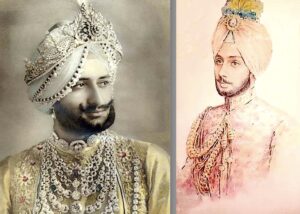
The most elaborate example of the Maharaja’s persistent overindulgence is known as “The Patiala Necklace” — one of the most extraordinary pieces of jewelry ever created. In 1928, the Maharaja commissioned Cartier to fabricate this masterwork. It took three years to complete at a cost of $25 million. Its setting held 2,930 diamonds. Its centerpiece was the world’s seventh-largest diamond, a 234-carat yellow De Beers. Joining it were seven other major diamonds, ranging from 18 to 73 carats, plus several Burmese rubies. Worn by The Prince until his death in 1938, it was last seen in public in 1941 when worn by one of his sons. Around 1948, the necklace mysteriously disappeared from the Patiala National Treasury, rumored to have been sold off for tax reasons. In 1982, the De Beers diamond surfaced at Sotheby’s in Geneva where it was auctioned off for $3.16 million. Then, in a final twist, in 1998 a Cartier associate found the necklace in a second-hand jewelry shop, in London — stripped of all its major stones. Cartier bought the remains and restored it using cubic zirconia and synthetic diamonds.

More Gems…
Below is the case of another diamond necklace. This portrait was painted in Paris in 1954. It made a 21st-century appearance at auction as proof of provenance for the sitter’s 69-diamond rivière necklace. The value of necklace put it out of Reiter’s reach, but after the sale, the auction house kindly connected him with the buyer who was willing to part with the portrait. The sitter is Mrs. Coussée, whose family were innovators in manufacturing plastic furniture in post WWII Europe and owned large factories in Ronse, Belgium.
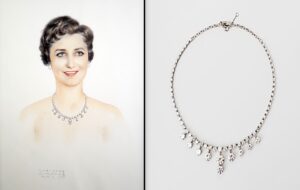 … and More Celebrities
… and More Celebrities

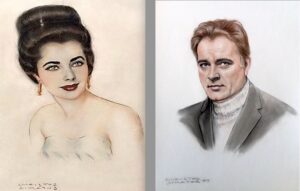
… and many “Glamour Girls”

The entire cruise delighted Toby Reiter — and she especially enjoyed her sittings with Simatos. Upon her return home, she shared with her son her distinct memory of the straightforward process Simatos implemented to capture her likeness. There were just two sittings. After the first, Simatos returned to his shipboard studio where he was assisted by a Polaroid image taken as an aide-memoire. He then completed the portrait during the second, and final, sitting. Future passengers on the Homeric would have only a few more years to sit for Simatos. It is most likely he retired to Cannes during the 1970s. That was when fleets of jumbo jets forced the cruise industry to change and adapt by appealing to the middle class. The earlier era of luxury cruising — along with a singular portraitist-in-residence amenity — slipped from memory.

While Reiter’s essay, “My Mother’s Portrait,” is personal, it is also an example of cultural journalism. In addition to investigating the artist’s famous sitters, his research and storytelling provide rare glimpses into the lives of many lesser known but nonetheless fascinating characters whose accomplishments would likely have gone largely unrecognized. Reiter’s essay also documents his global art treasure hunt and provides details on the lives of Simatos’ sitters, many of them long forgotten. His essay makes an appeal to all art hunters, especially those who haunt flea markets and antique shops, urging them to become familiar with Simatos’ portraiture and to join his hunt. He also puts out a call to the public, at large, asking for help in identifying the anonymous sitters seen in many portraits. And, when newly discovered portraits arise, Reiter intends to travel to meet the owners and document their acquisitions for his catalogue raisonné. Equally important, he intends to document their stories with a camera crew with a Q&A between Reiter and his fellow hunters. In addition to film (documentary and docu-series), Reiter’s story is highly adaptable to various forms of print media — magazines, newspapers, art journals, and, of course, a monograph in book form.
It is likely that art hunters have already come across other Simatos portraits but had not bothered to research their finds, simply because he is not listed in biographical dictionaries and other art references. After all, caution increases exponentially if one can’t easily find an artist’s bona fides. Without the security of a positive background check, interest in looking deeper usually fades. Numerous artists have suffered the cruel fate of falling through the cracks of art history. Relegated to a purgatory of marginalization, they fall victim to our collective memory loss — if, indeed, they had ever achieved some recognition in the first place. Most wind up in the dumpster. Without carefully looking at art, or being genuinely curious, it becomes too easy to quickly condemn a lesser-known artist’s work as lacking quality, historical significance, and value. Sadly, this condition of collective ignorance has proven ruthlessly repetitive in art history. Reiter vividly recalls the moment when his mother’s portrait sparked a journey of investigation. It was an epiphany, without which the Simatos signature would likely have remained just another undecipherable scribble beneath another unidentified face. Thankfully, this undeterred detective has added a significant portraitist to the chronicles of art history, illuminated his life’s work, and revealed the intriguing and largely untold back stories of his sitters.
— Peter Hastings Falk
Epilogue
This essay tells as much as is currently known about Simatos, illustrated with a selection of portraits with intriguing back stories. You can see more portraits by clicking on the tab, “The Portraits.” Moreover, Reiter’s essay — My Mother’s Portrait — features many more portraits along with their revealing histories. Most, but not all, of the portraits seen here were drawn from Reiter’s large collection. This exhibition presents a small representative selection. If you would like to read Reiter’s full essay, please send us an email and we will be pleased to forward it to him for his direct response.
Reiter explains his purpose:
“My Mother’s Portrait is of general human interest — a version of the age-old headline — ‘Man Finds Priceless Art in Dumpster’ — appealing to the near-universal fantasy that any one of us can, and sometimes do, stumble upon lost or undocumented (art) treasure. My story is truly multidisciplinary — perfect as content for a Discovery-type or arts, culture, history, or news media outlet — for a documentary, a docu-series, or a feature story. Partnership with a relevant sponsor in a branded entertainment agreement is also a possibility. My story, combined with Peter Falk’s essay, could even be transformed into a piece of historical fiction.”
Note that portraits drawn from Reiter’s collection are available for exhibition.
Will the Real Magda Lupescu... Please Shut Up!
— by Mark Neil Reiter

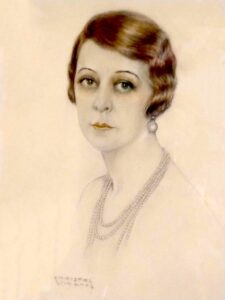
Christos Simatos had a significant career as the portrait artist for several European royal families, commissioned to capture their likenesses for posterity. One such family was the Royal Crown of Romania, specifically King Carol II [1893–1953], who assumed his title in 1930. The handsome King lived the life of a playboy. He sat for Simatos at least three times. In 1927, Carol first met Magda Lupescu [1896-1977]. Born in Hertza, a small Moldavian town, Magda was the daughter of a local Jewish pharmacist. She was famous for her unconventional beauty — flaming red hair, milky white skin, green eyes, curvaceous figure…and flirtatious demeanor. It didn’t take long before she became the King’s mistress. Meanwhile, he was on his 2nd marriage — to Princess Helen of Greece [1896-1982] — while Magda already had one divorce under her sash. (Helen — at left — sat for Simatos at least once.) This persuaded neither of these philanderers from carrying on a “private affair.” But after two years Carol could no longer contain himself and told his parents about his secret love (and that Helen disgusted him). When this hot news leaked, the Romanian populace universally reviled Magda. (Shades of Wallace Simpson and King Edward?) Due to her undue influence over the king, Magda had by 1927 become the target of The Iron Brigade, the Romanian National Guard, the overtly militant fascist movement. The King had set Magda up in a villa (pre-condominiums) near the Royal Palace — enjoying a wardrobe of Paris originals and $40,000 gold dinner plates — all paid for out of the Romanian treasury.
Then… Bang
The Iron Brigade was no joke. They took to using Magda’s head for target practice while she lollygagged in the garden of her villa. When she reported this most distressing breach of Royal etiquette to Carol, his eyes flashed Royal dudgeon. From that point on, the King suggested surrounding her villa with armed soldiers, and a police escort would now accompany her when she did her daily marketing. Magda reasoned that while that approach might be appropriate for a member of the court, the only title bestowed upon her was Chief Backseat Driver. But the power of this petticoat allowed for the resources of an infinitely more elaborate and expensive plan that Magda, herself, put into effect.
One can only imagine how this shrewd ruse popped into Lady Lupescu’s red head — perhaps inspired by the slapstick comedy of Hollywood’s Keystone Cops. Or a Greek tragedy? First, she assembled six, then twelve, “doubles” — lookalikes. She searched the Kingdom — high, and very low — to find twelve women who most closely resembled her in face and figure. Such details as the color of the hair, and the features and contours of the face are considered “malleable” — applied through the art and science of beautification.
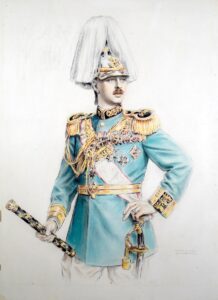
Carol was quite suspicious of this ploy. He had sought out his own look-alike — to protect himself from being the target of bomb throwers — but without success. Magda explained to the King that it was much harder to impersonate a man because the double must resemble the original very closely. There could be no “painting on” of facial features to produce a reasonable facsimile, the way a make-up artist could for women. (Of course, if the King had brought in Hollywood-type makeup/special effects artists it could have been possible. But such were the limits of his imagination.)
Crucial to this deception — and key to enticing a dozen women (surely of poorer means than Magda) — along with the risk of being blown to smithereens — was supplying them all with the exact same Paris wardrobe worn by Romania’s First Lady of Licentiousness. Imagine the bill for a full wardrobe of original designer outfits — times 12 — everything from day dresses to evening gowns, and fur coats, with every coordinating accessory. Magda kept strict records of her wardrobe so she could order her red-haired army to appear in public, on cue, pulling off a trick-of-the-eye — which on occasion fooled even the King. More than once, Magda’s in-palace spies reported that one of her doubles had fooled the King into engaging in hanky-panky — with the aid of the dimly lit passageways of the castle. And given that these 12 apt pupils were also schooled in imitating Magda’s caressing voice, and hip-swinging gait, this was bound to happen. As it was impossible for her to determine which one of her doubles had “double-crossed” her, Magda’s only option was to put her Chanel pump-clad foot down — informing the King that this “mistake” could not happen again.
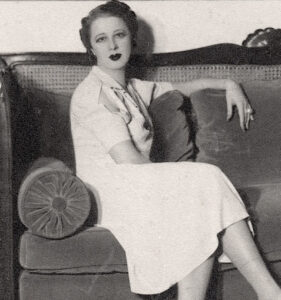
During the times when Magda’s interference with the political state was deemed too injurious to the power mongers, she let it be known that she was to flee to Poland. Several doubles were sent to the border, only to be captured, and then released once the Brigade realized their mistake. Then, Lupescu leaked rumors that she was headed for London. A trap was set at one of the railroad stations, and sure enough, at midnight, a coach rolled up, and out of it stepped a red-headed woman. But just as Lupescu’s enemies were about to seize her, along came another coach, with three red-headed women, and not one of them was Lupescu. During all the confusion she had deliberately put in motion, Lupescu put on a black wig and calmly rolled toward the frontier in a cheap motorcar — making her way to Paris.
Another time, it was reported that Magda was to appear in the middle of the afternoon, in streets full of traffic. This ruled out a kidnapping, so a plan was set for assassination. At the exact hour, an elegantly dressed woman appeared. As the killer waited for his victim to move into a position where he could not miss, he heard a warning signal from his co-conspirators. Glancing about, he was astonished to behold another Madame Lupescu, a carbon copy of the first. While hesitating as to whether to attempt to kill both, his jaw dropped at the vision of still a third Madame, right at the heels of the first two. Then a fourth appeared, followed by a fifth, sixth… and on and on… till the gunman looked like he had seen a ghost. It was said that the entire band of assassins got very drunk and then resigned in unison. It was most discouraging.
Dénouement
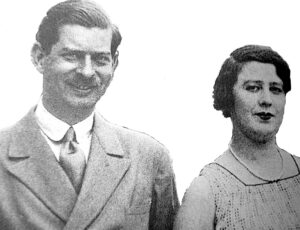
Ultimately, the King abdicated his throne. He and Magda fled the country for safer environs in Brazil — schlepping with them several hundred Louis Vuitton trunks filled with Royal treasures. Yes, they eventually married, in 1947. The New York Times reported that the former King finally married Magda after 23 years of companionship, but it was in a “death bed” ceremony after she had become gravely ill. The ceremony was performed in Carol’s suite at the Hotel Copacabana in Rio de Janeiro, Brazil, where they had lived since 1944. However, the couple soon moved to Estoril, Portugal, where Carol died in 1957. Magda outlived him by 24 years, passing away in 1977.
An appropriate postscript to the tale of Magda involves priceless jewels. There are several such “jeweled” stories — typical with the Royal families who were patrons of Christos Simatos:
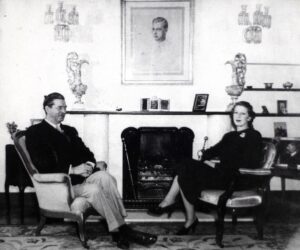
In the late 1920s, as an expression of his love for and devotion to Magda, King Carol gave her an exquisite pair of diamond and pearl drop earrings. In 1977, when Magda died, she bequeathed the earrings to an unnamed British woman she had befriended. When that lass passed on, she left them to her nephew, also unnamed. For 35 years the earrings sat in a drawer, until 2012, when the nephew, not expecting much, had them appraised. Because of their provenance and the near-perfect quality of the pearls, the earrings sold at auction for $2.7 million.
(Loud, Thunderous Applause… Slow Curtain… The End.)
There are eight million stories in “The Naked Archives.”
This has been one of them, painted by Christos Simatos.
— with apologies to “The Naked City” [1958–1963, ABC television series]
Source: The author credits source facts in this essay to Wikipedia as well as the article “Mme. Lupescu’s Dozen Red Headed Doubles” published online in The Esoterica Curiosa and written in 2012 by the woman known as Nash Rambler.
Simatos Portraits
-
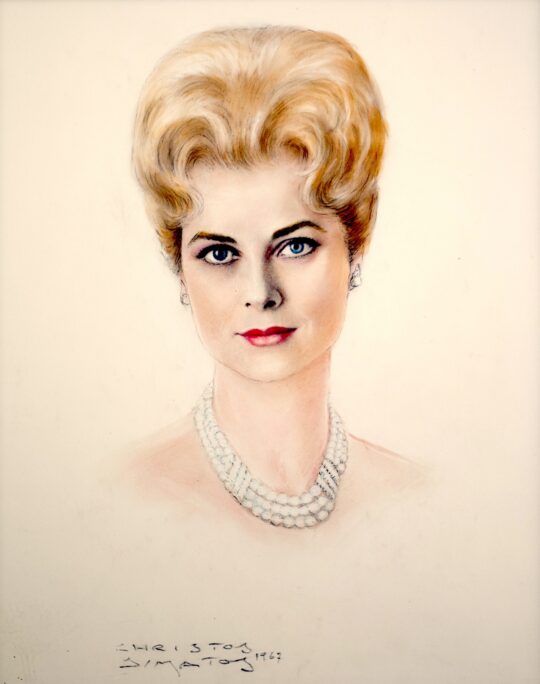 DETAILS
DETAILSPrincess Grace Kelly, 1967
15 x 12 inches (38.1 x 30.48 cm) -
 DETAILS
DETAILSUrsula Andress, 1971
15 x 12 inches (38.1 x 30.48 cm) -
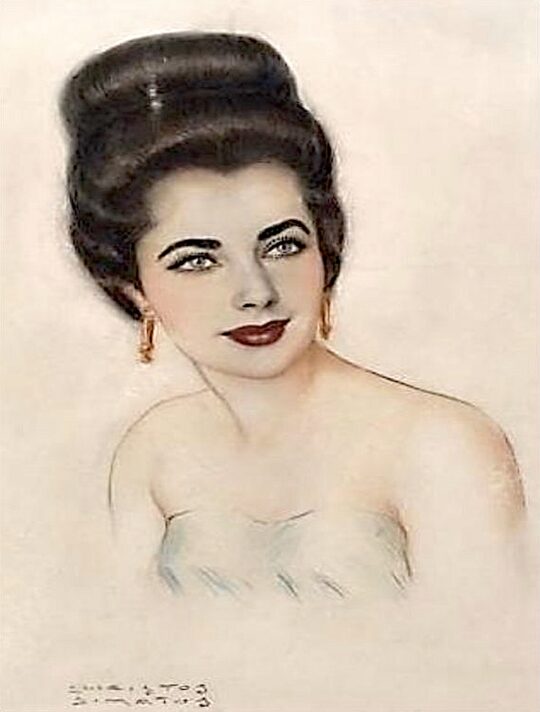 DETAILS
DETAILSElizabeth Taylor, 1960s
15 x 12 inches (38.1 x 30.48 cm) -
 DETAILS
DETAILSIngrid Bergman, 1953
15 x 12 inches (38.1 x 30.48 cm) -
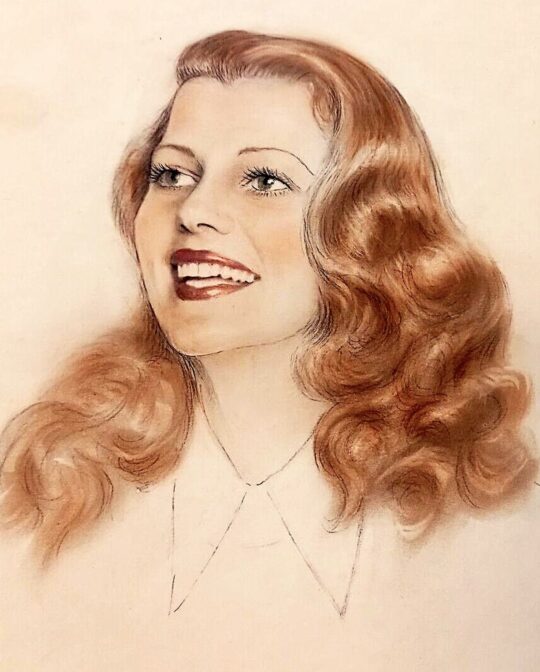 DETAILS
DETAILSMarilyn Monroe, ca.1945
15 x 12 inches (38.1 x 30.48 cm) -
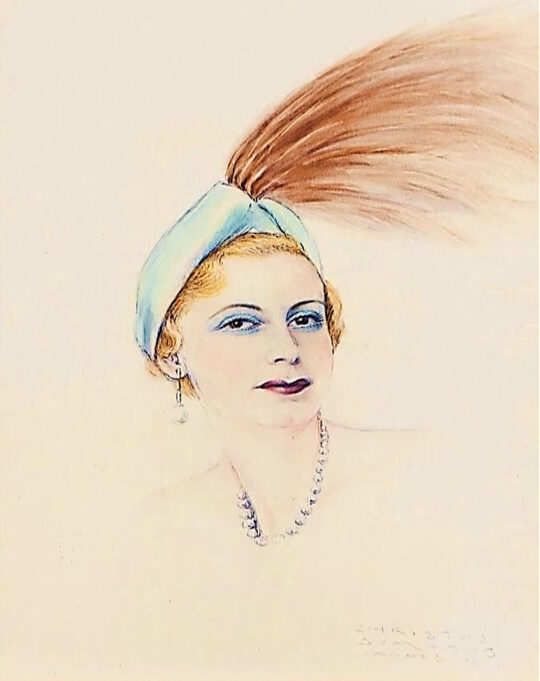 DETAILS
DETAILSThe Red-Feathered Hat, Cannes, 1949
15 x 12 inches (38.1 x 30.48 cm) -
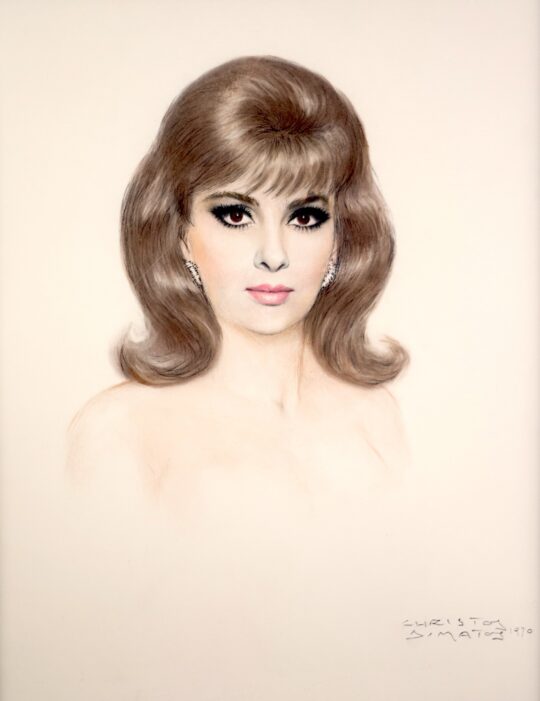 DETAILS
DETAILSGina Lollobrigida, 1970
15 x 12 inches (38.1 x 30.48 cm) -
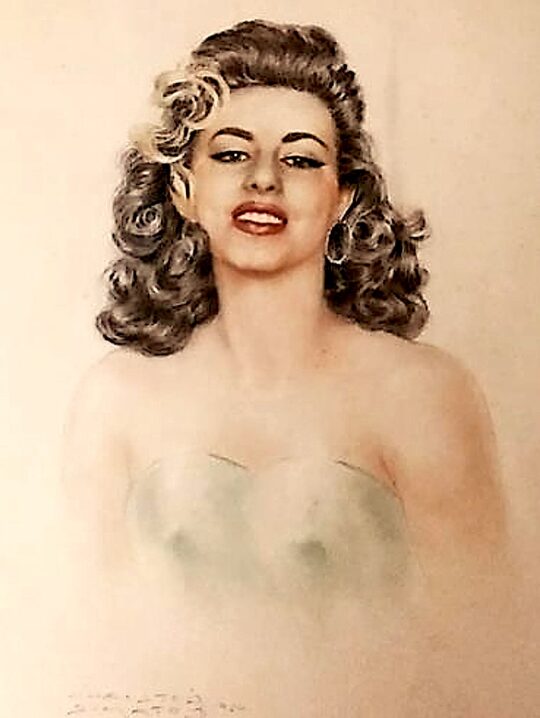 DETAILS
DETAILSSheer Bust, 1950
15 x 12 inches (38.1 x 30.48 cm) -
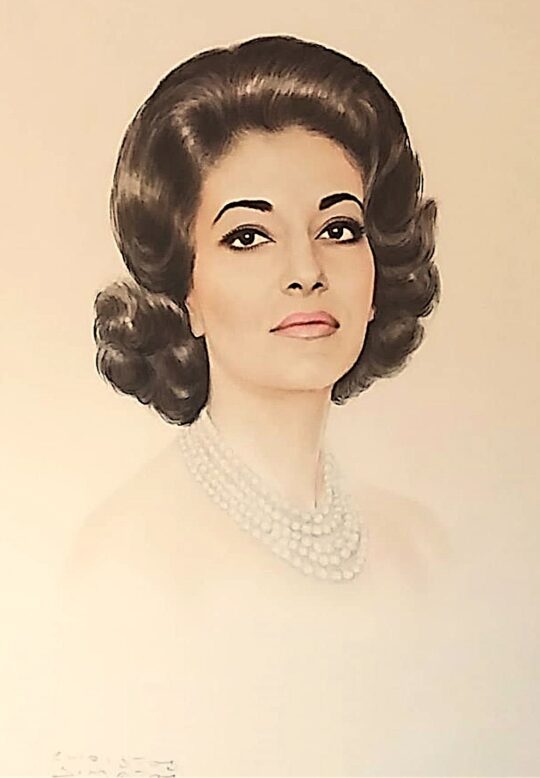 DETAILS
DETAILSMaria Callas, 1963
15 x 12 inches (38.1 x 30.48 cm) -
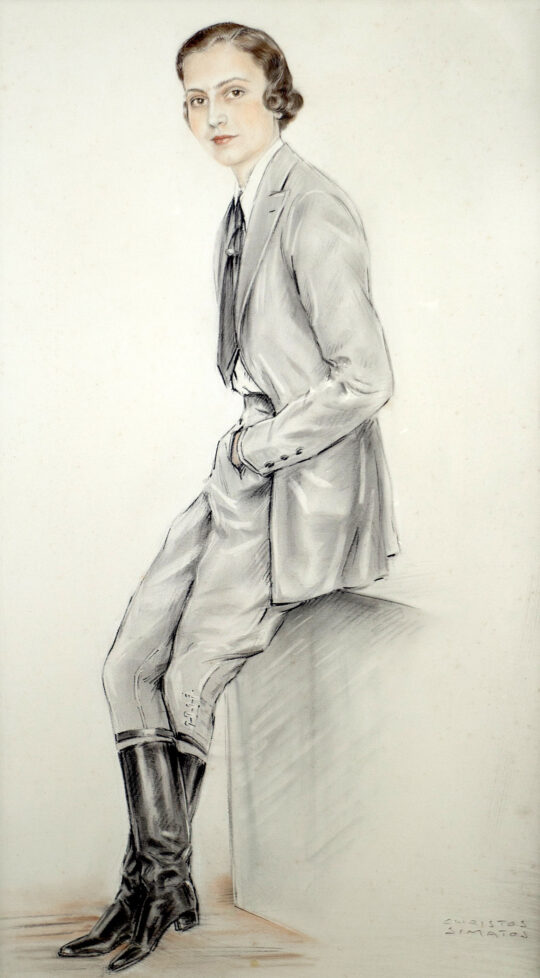 DETAILS
DETAILSLady Equestrian, 1940s
15 x 12 inches (38.1 x 30.48 cm) -
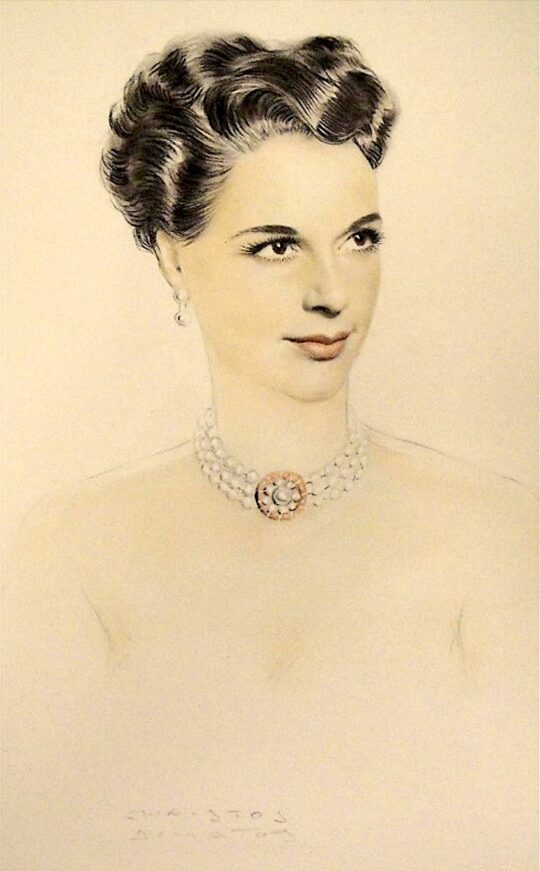 DETAILS
DETAILSDorothea Herrscher, Glamour Girl with a Rare Car, ca.1955
15 x 12 inches (38.1 x 30.48 cm) -
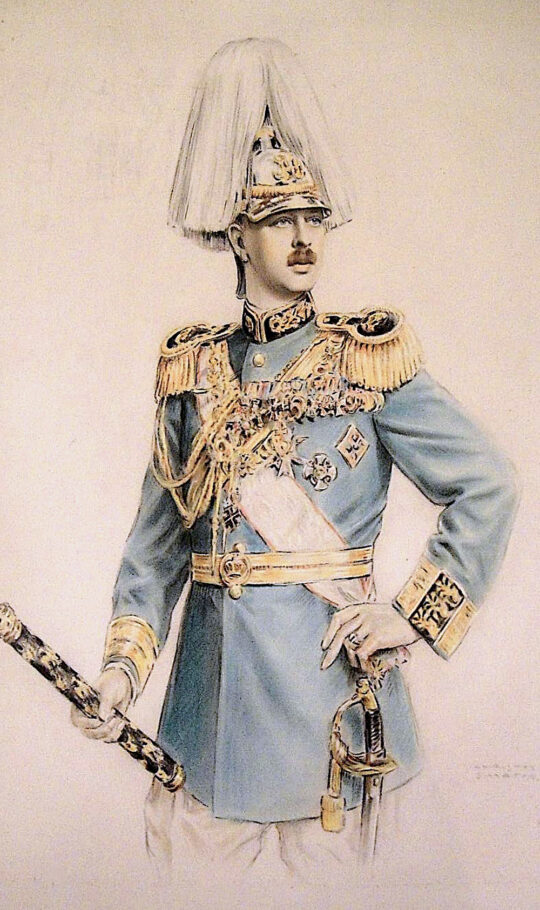 DETAILS
DETAILSKing Carol II of Romania, 1938
15 x 12 inches (38.1 x 30.48 cm) -
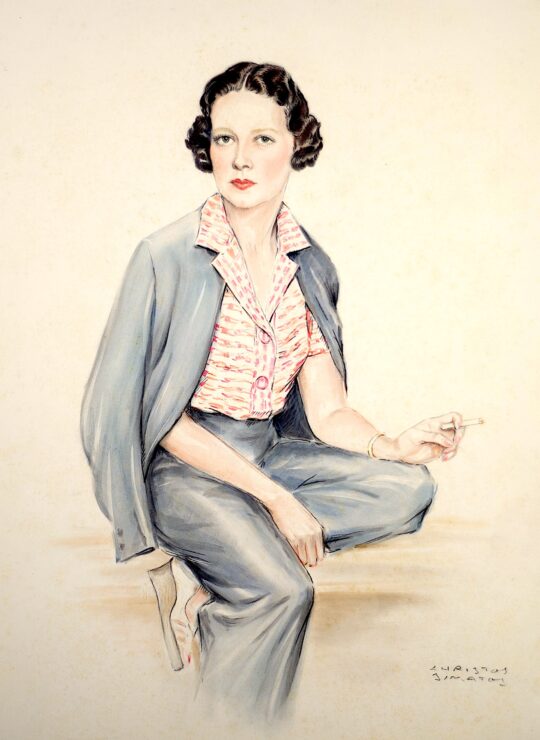 DETAILS
DETAILSElsie Mackay, British Aviator, ca.1928
15 x 12 inches (38.1 x 30.48 cm) -
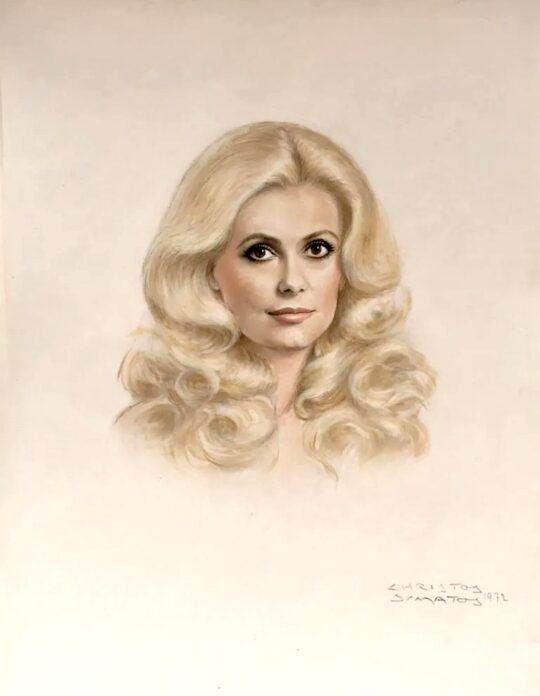 DETAILS
DETAILSCatherine Deneuve, 1967
15 x 12 inches (38.1 x 30.48 cm) -
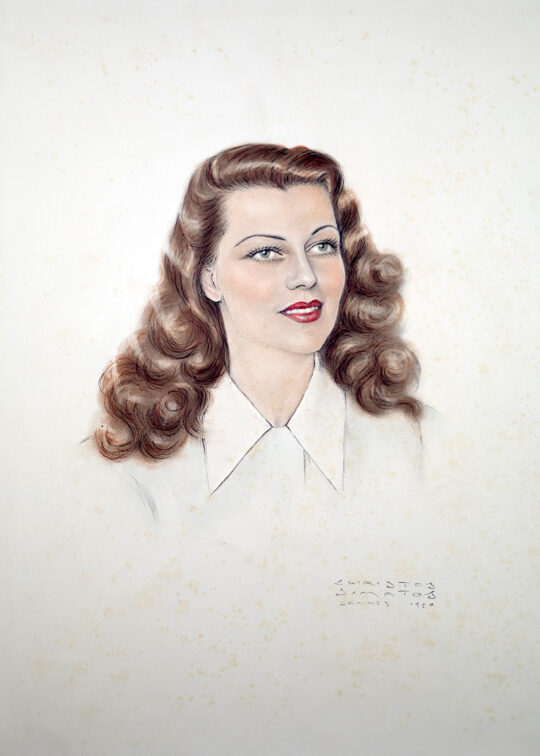 DETAILS
DETAILSRita Hayworth, Cannes, 1950
15 x 12 inches (38.1 x 30.48 cm) -
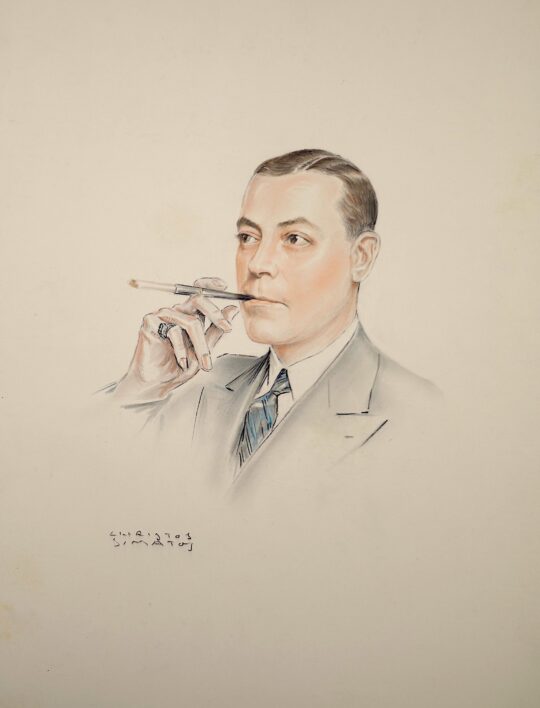 DETAILS
DETAILSThe Well-Groomed Dandy, 1950s
15 x 12 inches (38.1 x 30.48 cm) -
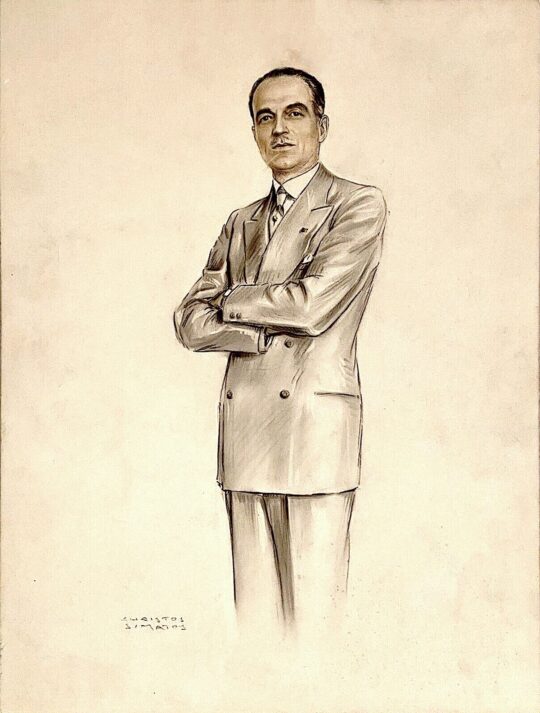 DETAILS
DETAILSTotò, Italian Performer, 1950s
15 x 12 inches (38.1 x 30.48 cm) -
 DETAILS
DETAILSMaurice Chevalier, 1965
15 x 12 inches (38.1 x 30.48 cm) -
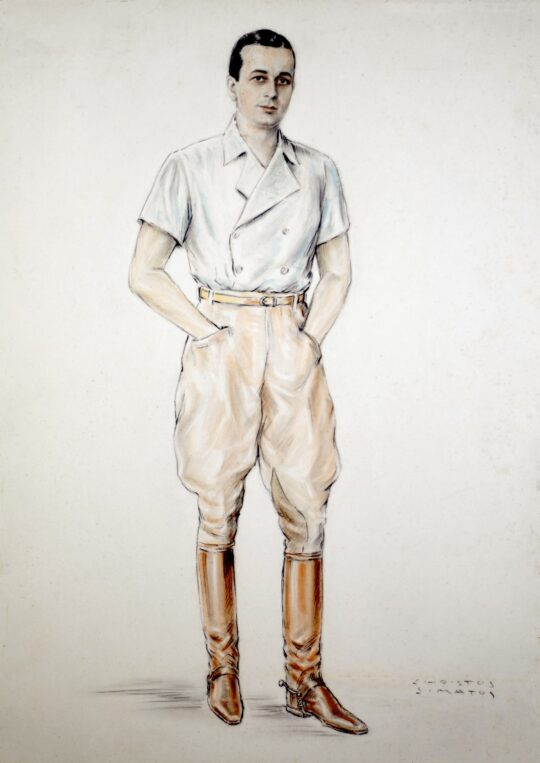 DETAILS
DETAILSGentleman Equestrian – Baron Edward Digby, 1940s
15 x 12 inches (38.1 x 30.48 cm) -
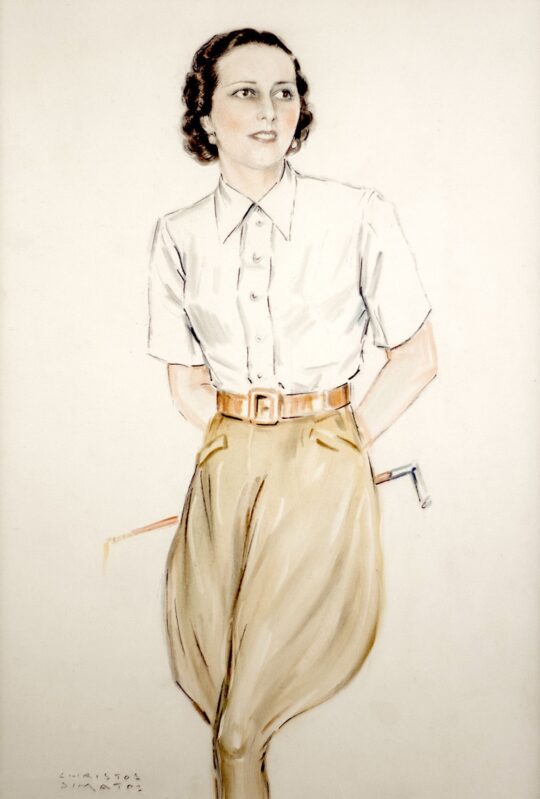 DETAILS
DETAILSLady Polo Player, 1940s
15 x 12 inches (38.1 x 30.48 cm) -
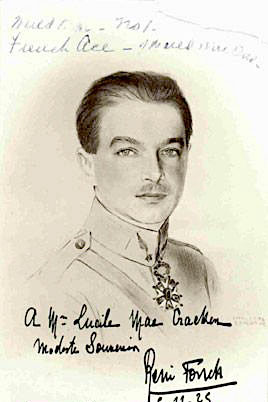 DETAILS
DETAILSRene Fonck, French Aviator, ca.1927
15 x 12 inches (38.1 x 30.48 cm) -
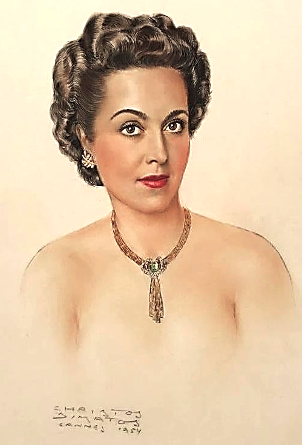 DETAILS
DETAILSA Glamour Girl, Cannes, 1954
15 x 12 inches (38.1 x 30.48 cm) -
 DETAILS
DETAILSExotic Beauty in Headscarf, 1940s
15 x 12 inches (38.1 x 30.48 cm) -
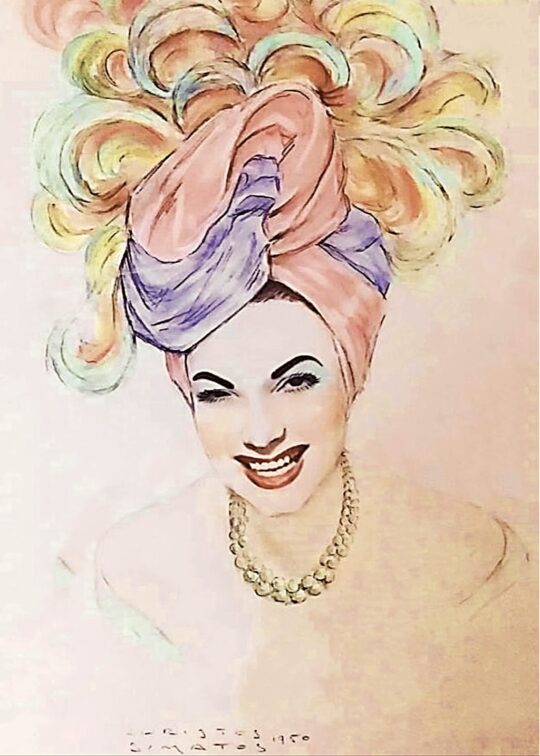 DETAILS
DETAILSCarmen Miranda, 1950
15 x 12 inches (38.1 x 30.48 cm) -
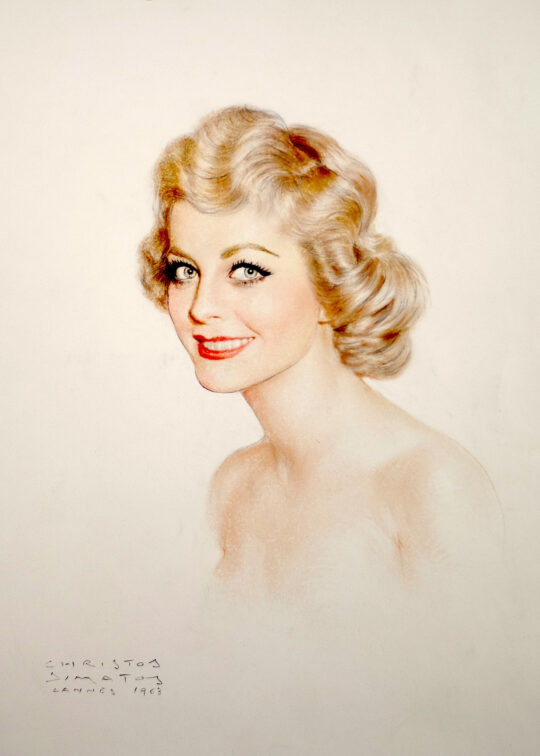 DETAILS
DETAILSMichele Morgan, Cannes, 1949
15 x 12 inches (38.1 x 30.48 cm) -
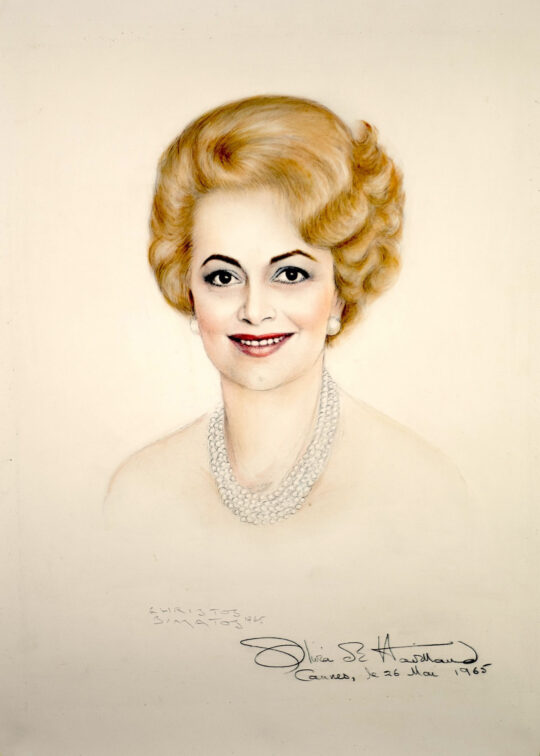 DETAILS
DETAILSOlivia de Havilland, Cannes, 1965
15 x 12 inches (38.1 x 30.48 cm) -
 DETAILS
DETAILSRichard Burton, 1969
15 x 12 inches (38.1 x 30.48 cm) -
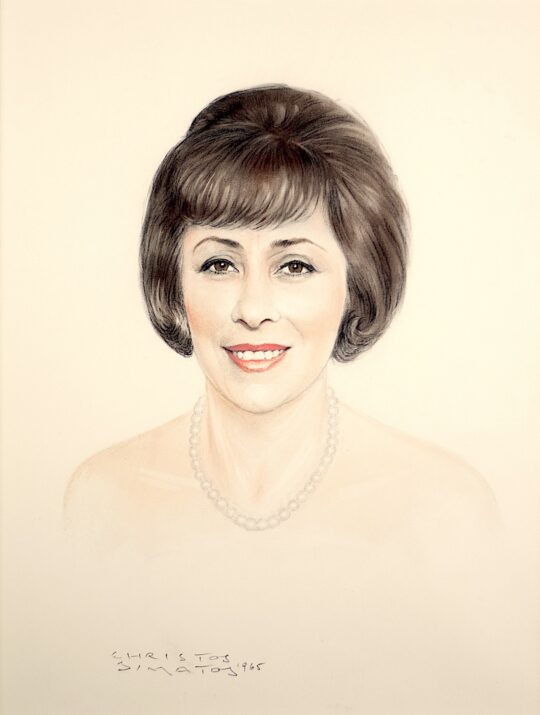 DETAILS
DETAILSToby Reiter — Where this whole story started!, 1965
15 x 12 inches (38.1 x 30.48 cm)
